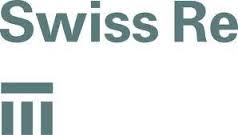How insurers in Asia can help consumers meet their increasing needs for medical insurance products and services
 All markets surveyed in this study (China, Hong Kong, India, Indonesia, Malaysia and Thailand) exhibit a very high level of awareness of medical insurance products, but penetration varies significantly. A tangible gap exists in selected markets, which also represents a window of opportunity for medical insurers.
All markets surveyed in this study (China, Hong Kong, India, Indonesia, Malaysia and Thailand) exhibit a very high level of awareness of medical insurance products, but penetration varies significantly. A tangible gap exists in selected markets, which also represents a window of opportunity for medical insurers.
This penetration gap is significant in markets like Indonesia and India, but less so in markets like Malaysia and China, where it is somewhat negated by group medical coverage or basic government coverage. The challenge for insurers is to translate awareness into ownership, especially in markets where a huge gap exists.
Irrespective of the level of medical insurance penetration and the extent of government support, patients still rely very heavily on personal funds or family support to pay medical expenses in the markets surveyed. At the same time, in high ownership markets, the existing products either come with low reimbursement rates and/or significant limits on coverage.
This is reflected in (1) a low ratio of claims among owners, partly on the out-patient side; (2) high out-of-pocket expenses among owners; and (3) a high intention to purchase among existing owners.
Thus, we see significant but different opportunities in these markets. In high ownership markets, people are still eager to buy, though they are looking for better products than those they currently own (in terms of reimbursement rates and coverage). In low ownership markets, people want easy entry products or ones that supplement government coverage.
As a result, value-added features (family plans, wide coverage, etc.) are of particular importance to consumers in high ownership markets, which are looking for enhanced and more comprehensive benefits and services. In low ownership markets, increased education combined with products that are simpler to issue and tailored to meet consumers’ immediate needs, may also be a catalyst for purchase.
Key Findings
High awareness of medical products across Asia
However penetration varies significantly – so its high in markets like Hong Kong but low in markets like Indonesia and India
There continues to be a high out of pocket spend across markets and thus a need to better educate the consumers on the value of medical insurance
Consumers are willing to pay more for higher benefits and coverage, where concern for having a catastrophic illness and inability to pay are high
There remains a high intention from consumers to buy a new medical product in the next 12 months
In low penetration markets cost is a challenge and consumers may be looking for more simple low cost solutions
Consumers are happy with the overall service and product from insurers but there are areas for improvement
Consumers generally view the healthcare they receive from the medical profession as good, although the perception is much higher in some markets than others
They will not always follow doctors’ advice though, citing reasons such as cost, not necessary and wanted another opinion
Ownership affected by income level
Not surprisingly, household income level has a direct bearing on medical insurance ownership. Across all of the markets surveyed, medical insurance ownership is the highest among those in the top 30% income bracket.
Ownership is also the lowest among those in the bottom 30% income bracket – for example, it is almost negligible among those in this income bracket in Indonesia. Similarly, ownership is high in the top 30% income bracket in Thailand (78%), but extremely low in the bottom 30% income bracket (7%).
Claimants’ experience is generally good
Across all the surveyed markets claimants’ experience is generally good, with the majority thinking that their claims have been settled fairly. More than two-thirds of respondents in Thailand, Indonesia and China who have made a claim in the past 12 months are satisfied with their experiences. However, claimant satisfaction is lower in Malaysia.
High intention to purchase in some markets
Notwithstanding the high ownership of medical insurance and a reasonable level of government support, respondents in China, Hong Kong and Malaysia show a high intention to purchase a new medical policy or upgrade their existing policy in the next 12 months.
The fact that many of them are already policy owners indicates that their existing plans may be insufficient to meet their requirements. In India, Indonesia and Thailand, despite low penetration, the purchase intention is lower than in other markets, but still reasonable at around 30%.
‘Lack of knowledge’ and ‘price/affordability’ are major barriers when it comes to respondents’ intention to buy. There is also a tendency among both Indonesians and Thais to rely on public healthcare/government healthcare/insurance schemes..
Regional consumer survey
Swiss Re commissioned this regional consumer survey covering six Asian markets (China, Hong Kong, India, Indonesia, Malaysia and Thailand) and 2,561 respondents aged 20 to 70 years. This survey aimed to gauge respondents’ current medical care situation, medical claims experiences and preferences, as well as future intentions and preferences for product features and channels. This report summarises the key findings.
About the respondents
The respondents to our survey are 20-70 years of age, with over 80% aged between20 and 50 years. The majority (more than 65%) of the respondents are married, with the highest proportion of these based in India (76%) and Indonesia (77%). The average household size is three to four family members.
The average personal and household incomes vary across the region, with the lowest being in India – an average monthly personal income of just over USD 190 and a household income of USD 335. The highest personal and household incomes were recorded in Hong Kong, at USD 2,576 and USD 4,230, respectively.
Most of the respondents live in the more developed cities of their respective countries. Over a quarter of the total respondents have attained higher education/a degree, with this proportion highest in Malaysia (53%), followed by China (47%) and Hong Kong (42%). Over half of the respondents are full-time workers, with this proportion highest in China (81%) and Hong Kong (79%), and lowest in Indonesia (32%).



Leave a Reply